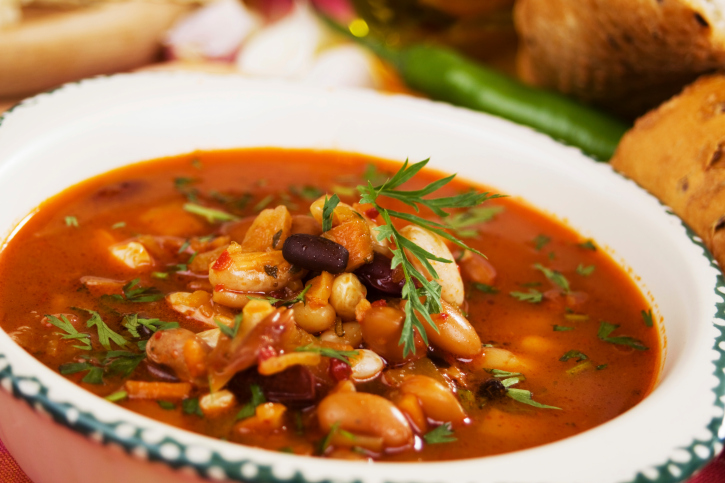Section navigation
Vegetarian eating

You may wonder what it means to be vegetarian, and you may have even considered going meatless. Well, vegetarianism can be quite healthy if you plan carefully and make sure to eat a variety of different foods. Keep reading to learn about:
Types of vegetarians  top
top
There are three main types of vegetarians. They are named for the types of food they eat:
Lacto-ovo vegetarians eat:
- Plant-based foods
- Eggs
- Dairy products like milk
Lacto-vegetarians eat:
- Plant-based foods
- Dairy products
- No eggs
Vegans eat:
- Plant-based foods
- No eggs
- No dairy products
Some people even try just cutting out meat sometimes. They may not be official vegetarians, but they still can get the great health benefits of eating more fruits, veggies, and plant sources of protein.

Vegetarian variety
Are you thinking about becoming vegetarian? Try these flavorful dishes from around the world right at home. If you can't cook on your own, get your family to join in the fun. Here are some recipes you and your family can try:

- Caribbean casserole
- Corn and black bean burritos
- Broccoli with Asian tofu
- Tuscan beans with tomatoes and oregano
- Classic macaroni and cheese

Healthy eating for vegetarians  top
top
If you plan well, you can get all the nutrients you need from vegetarian foods. But dairy products are good sources of calcium, vitamin D, and the protein you need. And eggs are a good source of vitamin B-12 and protein. So if you don't eat dairy products or eggs, you need to look elsewhere for these nutrients. Vegetarians also need to make sure that they get enough iron and zinc.
You can learn more about healthy vegetarian eating from ChooseMyPlate.gov. A dietitian can also help you come up with a vegetarian eating plan that provides you with the nutrients you need during your teen years. It's a good idea to tell your doctor if you are vegetarian, so he or she can monitor your growth. You also can ask your doctor or dietitian if you should take a vitamin and mineral supplement.
Here are some non-animal sources of nutrients that vegetarians need to make sure they get enough of:
- Tofu and other soy-based products
- Beans, peas, and lentils
- Peanuts, seeds, nuts
- Grains
Keep in mind that no one plant food has all the amino acids your body needs. (Amino acids are the building blocks your body uses to make proteins.) So, to get all the amino acids you need, you have to eat a variety of plant foods over the course of your day. For example, eating beans and brown rice will give you complete proteins because each food contains the amino acids that the other food lacks.
- Fortified soy and rice drinks
- Some fortified cereals
- Some meat replacement products
- Some types of nutritional yeast
- Some fortified cereals
- Some fortified soy drinks, rice drinks, and orange juice
- Some fortified cereals
- Some fortified margarines
- Tofu (if made with calcium)
- Some fortified soy drinks, rice drinks, and juices
- Some fortified cereals
- Chinese cabbage, bok choy, broccoli, kale, and collard greens
Keep in mind that vegetable products are not as good a source of calcium as milk. You will have to eat many more veggies than you would have to drink milk to get enough calcium.
- Some fortified breakfast cereals
- Green leafy vegetables, such as spinach and turnip greens
- Cooked dry beans (such as kidney beans and pinto beans) and peas (such as black-eyed peas)
- Dried fruit, like apricots, prunes, and raisins
- Tofu
- Enriched and whole grain breads
Eating foods with vitamin C, such as oranges, tomatoes, and grapefruit, can help your body absorb iron.
Omega-3 fatty acids (n-3 fatty acids)
- Soy milks and breakfast bars with added DHA (a type of n-3 fatty acid)
- Flaxseed
- Walnuts
- Canola oil
- Soy products like tofu
- Whole grain bread
- Cooked dry beans (such as kidney beans and pinto beans) and peas (such as black-eyed peas)
- Nuts
- Oatmeal
- Tofu
Content last reviewed November 05, 2013
Page last updated June 12, 2014







